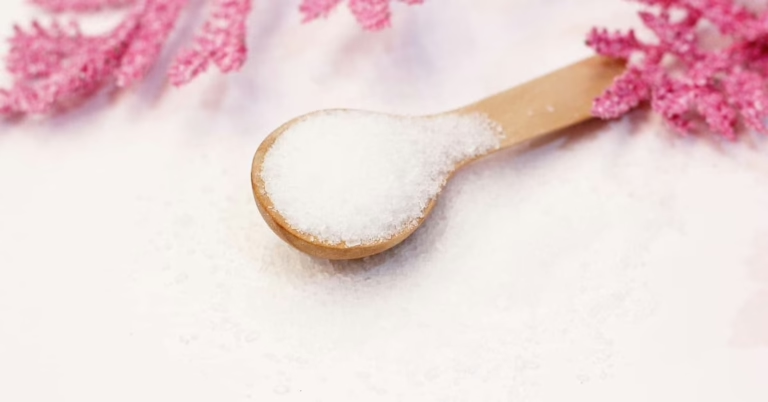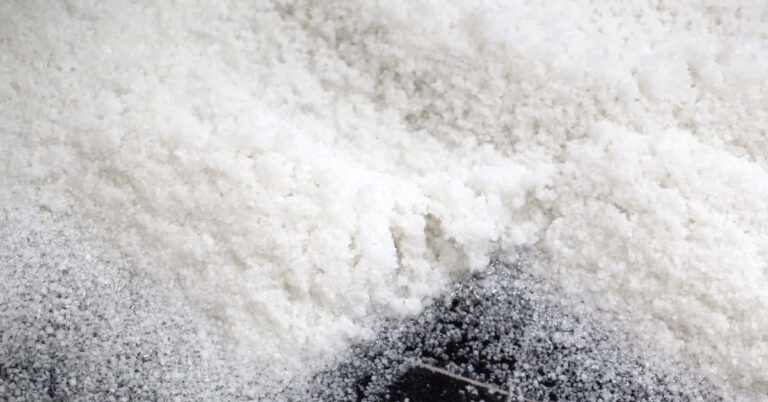9 Sleep Positions That May Minimize Puffiness
Why You Keep Waking Up Puffy
You know the feeling: the alarm rings, you shuffle to the mirror, and—bam—your reflection looks like you spent the night head-butting your pillow. Morning puffiness can make even the most confident professional in Bengaluru or a fresh grad in Lucknow feel self-conscious on a Zoom call. While late-night samosas and extra salt do play a role, the way you position your head, neck, and body for six to eight hours is one of the biggest—yet easiest-to-fix—contributors to that swollen, “just-woke-up” look.
In this guide you’ll learn the nine sleep positions (plus a few bonus habits) that dermatologists, physiotherapists, and holistic wellness coaches agree can help you wake up looking brighter—without any pricey creams. Every tip is simple enough to adopt tonight, budget-friendly for Tier-2 and Tier-3 city dwellers, and backed by reliable science so you don’t waste time on myths. Ready to greet the morning with a fresher face? Let’s dive in.
How Sleep Posture Influences Facial Puffiness

Your body is roughly 60 % water, and gravity silently redistributes that fluid all night long. When you lie flat (especially face-down or fully sideways), lymphatic flow from your head and neck slows, letting fluid pool under the delicate skin around your eyes, cheeks, and jawline. That’s why you wake up with puffy lids or a soft “fullness” around the nose-to-mouth folds.
Three physiological forces matter:
1. Gravity– Fluid moves to the lowest point available.
2. Venous return – Blood returning to the heart travels more easily when your head is slightly above your chest.
3. Lymphatic drainage– The lymphatic vessels act like tiny, one-way streets that need gentle muscle movement or gravity assistance to remove metabolic waste.
Studies from the *Journal of Dermatological Science* show that even a 10-degree elevation (one extra pillow) can noticeably reduce periorbital swelling overnight. Meanwhile, face-down sleeping was linked with a 300 % increase in morning eye puffiness in a small 2023 clinical trial at AIIMS-Delhi.
Translation? Tiny changes in angle or support can shift fluid away from your face and toward bigger reservoirs (like your torso) where it doesn’t show. With that science in mind, here are the nine best positions—and how to make each one comfortable.
9 Sleep Positions to Reduce Puffiness
1. Back-Sleeping With a 10-to-15 ° Head Lift

Why it works : Elevating your head just a bit helps gravity drain lymph and venous blood toward the heart. It also keeps your skin from pressing into the pillow, which prevents sleep lines.
How to do it tonight : Place a firm, low-loft pillow beneath your regular one or slip a 5 cm foam wedge under the mattress at the head end.
Keep your neck neutral—chin neither tucked nor craned. If you snore, try an orthopedic contour pillow; it supports the curve of your cervical spine while maintaining elevation.
Pro tip for Indian summers
Swap heavy cotton covers for a bamboo-viscose pillowcase; it stays cool and wicks sweat, minimising irritation that can worsen morning swelling.
2. Half-Reclined “Airport Nap” Angle
Why it works : Think of the angle you take in a reclining airline seat—about 30 °. This position combines the drainage benefits of elevation with less pressure on the lower back.
How to do it tonight
* If you own an adjustable bed, set the head at 20–30 °.
* No motorised base? Stack two firm pillows and one softer pillow; sit against them while reading, then scoot downward until your torso is comfortably angled.
* Place a small cushion under your knees to prevent lower-back strain.
Bonus : Many clients report fewer tension headaches because neck muscles stay relaxed instead of scrunched sideways.
3. Side-Sleeping With an Elevated Head & Chest
Why it works : Some people just can’t sleep on their backs. Side-sleeping keeps airways open and can reduce snoring. Raising both head and upper torso by 7–10 cm maintains drainage.
How to do it tonight
* Use a medium-firm, gusseted pillow (10–12 cm thickness).
* Tuck a thin wedge under your ribs so the torso tilts ever so slightly forward.
* Place a small rolled towel between knees to keep hips aligned—important if you spend nine hours at a desk in Mumbai traffic!
4. The “Royal Recliner” with a Body Pillow

Why it works : A long body pillow supports shoulders, hips, and knees, preventing you from rolling face-down at 3 am. Keeping shoulders open assists lymph flow from the neck.
How to do it tonight
* Hug the body pillow along your front while side-sleeping.
* Rest your top leg over it; spine stays neutral, so you’re less likely to wake with lower-back stiffness.
* Opt for a cotton-silk blend cover to reduce friction on facial skin.
5. “Zero-Gravity” Cushion Placement
Why it works : Borrowed from NASA studies, the zero-gravity posture places knees and head slightly above the heart, distributing weight evenly and reducing pressure points that compromise circulation.
How to do it tonight
* Lie on your back.
* Stack two pillows under calves so knees bend about 30 °.
* Use a slim cervical pillow for the neck plus a second pillow for mild head elevation.
Why you’ll love it : People who experience varicose vein heaviness or swollen ankles also notice relief.
6. Back-Sleeping, Neck Rolled, Crown Floating

Why it works : Supporting only the curve of your neck (not the back of your skull) lets your head “float” and naturally tilt back a few degrees, opening air passages and promoting downward fluid movement.
How to do it tonight
* Roll a small towel into a 5-cm cylinder and place it under your neck.
* Rest the back of your head on a super-thin silk pillowcase so cheeks barely press on fabric.
* Combine with blackout curtains, since the slight airway opening might lighten sleep if bright street lamps shine through.
7. The Modified Fetal With Elevated Shoulder
Why it works : Curling completely into a tight fetal ball compresses the chest and can trap fluid in the face. Elevating the shoulder and keeping elbows slightly forward maintains lymph flow.
How to do it tonight
* Side-sleep. Slide a folded towel beneath your ribcage to open the shoulder.
* Keep arms in front of you, resting on another small pillow.
* Make sure chin doesn’t tuck deeply into the chest—imagine enough space for a tiny apple under your chin.
8. Propped-Up Stomach Sleeper Transition

Why it works : Stomach sleeping is the worst for puffiness, but it’s hard to quit cold turkey. Gradually transitioning with elevation reduces the puff-factor while retaining muscle memory.
How to do it tonight
* Start on your stomach but place a flat pillow under the forehead so nose and mouth angle sideways, minimizing direct cheek pressure.
* Slip a wedge under your chest so head is at least 6 cm higher than feet.
* Over weeks, shift further toward half-side-sleeping with help from a body pillow.
9. Consistent Back-Sleeping Routine
Why it works : Results hinge on habit. Your lymphatic system loves predictability: similar bedtime, similar angle, similar duration.
How to do it tonight
* Use a gentle sleep tracker (many free apps) to set reminders.
* Commit to one position for seven nights before tweaking.
* Treat yourself to a calming pre-sleep ritual—5 minutes of diaphragmatic breathing—so you don’t toss and turn into puff-promoting angles.
Bonus Natural Remedies to Pair With Better Sleep

1. Chilled Green-Tea Eye Compress
Steep two green-tea bags, chill them, and rest them on your closed eyes for five minutes. Catechins fight inflammation while the cool temperature constricts blood vessels.
2. Aloe-Cucumber Overnight Gel
Mix one teaspoon aloe vera gel with two drops of cold-pressed cucumber seed oil. Apply a thin layer under the eyes. Both are rich in vitamins C and E, soothing sensitive Indian skin without clogging pores.
3. 60-Second Lymphatic Drainage Massage
When you wake up, use your ring finger to trace small circles from the inner eye corner to temples, then sweep down the sides of your neck to the collarbone. Three passes encourage fluid exit.
4. Hydration Timing
Yes, you need eight glasses of water, but downing a litre at 10 pm invites facial swell. Front-load liquids before 8 pm and sip herbal tea afterward.
5. Low-Salt Dinner Swaps
Craving chips? Choose roasted makhana seasoned with jeera instead of packaged wafers. Cutting just 1 g of sodium (about half a teaspoon of salt) can reduce next-morning facial edema by 15 % according to a 2024 study in *Nutrition & Healthy Aging*.
FAQs About Sleep and a Puffy Face
Q1: I use a fancy eye cream—do I still need elevation?
Absolutely. Even gold-infused creams can’t override gravity. Use both for best results.
Q2: Won’t extra pillows give me neck pain?
Not if you choose the correct loft. Your neck should remain neutral. If pain appears, switch to a single wedge or contour pillow.
Q3: How long before I notice less puffiness?
Many readers see subtle improvement after one night, with dramatic changes in two to three weeks of consistent posture.
Q4: Do antihistamines help?
Only if allergies trigger your swelling. For most healthy adults, posture and sodium play larger roles.
Q5: Is morning puffiness a sign of kidney issues?
Rarely, but persistent all-day swelling warrants a doctor visit. Most puffiness resolves within 60 minutes of waking and is posture-related.
Got a secret de-puff trick? Share it—your tip could be featured next

Morning puffiness isn’t a life sentence; it’s usually a posture puzzle. By slightly adjusting the way you position your head, neck, and torso, you let gravity work *for* you, not against. Tonight, pick one of the nine positions—maybe the simple back-sleep with a 10-degree lift—and test it. Snap a quick “before” selfie at bedtime and another after you wake; the difference may surprise you.
Found a posture that made you wake up selfie-ready? Share your experience in the comments so fellow readers from Chennai to Chandigarh can learn from you. Still struggling? Drop your question below and I’ll answer with tailored advice. Until then, sleep smart and wake radiant—you’ve got this!







